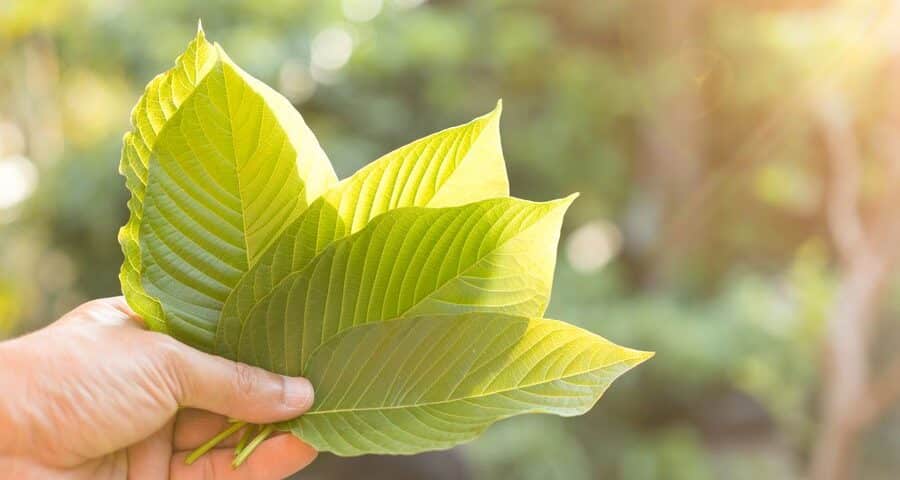
Most Effective Kratom for Sleep & Better Rest
June 7, 2021
The Best Kratom Strain to Increase Productivity
June 21, 2021KratKratom is rapidly gaining popularity in the western world due to its countless beneficial properties. But how is kratom made? Have you ever wondered what happens before it reaches you?
We’ve broken the process down. So, read on to find out.
How Is Kratom Made?
1. The Origins and Cultivation
Kratom is a natural botanical specimen. It comes from a tree – Mitragyna speciosa from the Rubiaceae plant family. Kratom trees grow across Southeast Asia. They are native to Indonesia, Thailand, Malaysia, Myanmar, Vietnam, and Papua New Guinea.
Other places like India and the Philippines may claim that they also have it. However, that isn’t Mitragyna speciosa.
There are a few different varieties of the Mitragyna tree. But, only one of them contains the alkaloids that make kratom the beneficial herbal product that we love. Mitragyna hirsuta and Mitragyna javanica are related to kratom but contain other alkaloids. They don’t have the same properties as mitragynine and 7-hydroxymitragynine.
Mitragyna speciosa trees love heat and humidity and grow best in a tropical and hot climate with high humidity.
Kratom mainly grows in the wild. However, in Indonesia, the primary exporter of kratom to the west, you can also come across farms where local growers cultivate it for production. This helps them to ensure steady and reliable production rates rather than compete with other harvesters for the same wild plants.
Many farmers and harvesters, such as the ones we source our kratom from, have been in the kratom trade for generations. Yet, many newcomers have appeared.
The information on the popularity of kratom has spread. Many farmers have abandoned their usual crops and switched to kratom because it’s a more lucrative industry. Since Thailand has decriminalized kratom, it’s expected to have a flood of new kratom farmers, too.
On the surface, it may seem like a positive thing. Unfortunately, many of the new farmers lack the experience and knowledge to work with kratom.
2. Harvesting Kratom
Experienced farmers know when the best time to harvest kratom is to ensure that it’s rich in beneficial alkaloids.
In most cases, farmers allow the trees to mature before starting to pick leaves from them. This ensures an optimal amount of beneficial alkaloids in the leaves, and it’s normally when the tree is about 2-5 years old. However, some strains may be picked at an earlier time.
Some kratom strains are made from primarily wild trees, whereas others may come from cultivated trees. Other strains may contain a combination of both. If, however, the trees have received plenty of humidity and heat, both have high quality. In this case, it doesn’t matter whether your kratom powder is made from wild or cultivated trees.
Farmers usually learn to detect when leaves are ready to be harvested. They then trim these leaves. Since kratom is an evergreen tree, it regrows new leaves, continuing the cycle.
Now, to the good part. How is kratom made from these leaves?
3. Drying and Fermentation
Having picked the leaves, farmers thoroughly wash them to remove any dust, dirt, or debris that may have accumulated on them. This is a rather tedious yet essential step. After the leaves are dried and ground, the kratom powder is made. It is impossible to remove this contamination.
Next, the leaves undergo a closely monitored drying process. Each vein type requires a different drying process. It may involve drying leaves in either direct sunlight, indoors, or using a combination of the two.
The process applied to each vein type varies as it promotes the development of different alkaloids. Certain alkaloids like 7-hydroxymitragnine continue to develop during the drying process.
Red vein strains tend to get the most exposure to UV light, making them the richest in 7-hydroxymitragynine. Usually, the drying occurs in direct sunlight. Nonetheless, farmers can also use UV lamps for this process. Green vein strains dry outdoors under direct sunlight or indoors under potent UV lamps. The process is followed by an indoor drying stage away from both heat and light.
White kratom strains are typically made by drying them indoors, without exposure to any UV light. To produce yellow kratom, it’s common for farmers to involve a fermentation process.
Each stage can take anywhere from a few hours to several days. Farmers tend to keep the exact process of how each kratom strain and vein type is made secret. This is especially true if they apply a method perfected throughout generations.
4. Grinding, Packing, and Shipping Kratom
Once the leaves are dry, farmers crush or grind the leaves. The original method involves crushing kratom leaves. This creates a course product that resembles tea, and some buyers still prefer their kratom this way.
How is kratom made nowadays?
Most kratom available for sale today undergoes a micron grind procedure. This creates a very fine powder.
Finally, farmers pack kratom powder into large vacuum-sealed bags that they export to merchants like us. Usually, the process is quick. Yet, in the aftermath of the COVID-19 pandemic, there are delays in kratom production and shipping.
5. Kratom Lab Testing
Despite being the largest kratom exporter to the rest of the world, Indonesia doesn’t have regulations on kratom quality. In addition to that, it doesn’t require lab testing to verify that the exported kratom is free of contaminants and pathogens. This can cause serious health concerns.
The Food and Drug Administration (FDA) does not regulate kratom either. Instead, it considers it a dangerous drug with no medical value and likens it to opioids and other drugs. Therefore, lab testing is an essential step that vendors within the United States must take.
Lab testing ensures that imported kratom leaf products are pure and safe to buy. Not testing may lead to exposure to heavy metals, adulterants, contaminants, pathogens, and other potential risks.
A number of states have passed the Kratom Consumer Protection Act, legislation that regulates kratom and keeps it legal. In these states, lab testing is required by law.
For accurate and objective results, vendors should use the services of independent third-party laboratories. They should send a sample of each batch and each strain that they receive.
Laboratories verify the content of the product, such as the levels of mitragynine and 7-hydroxymitragynine. They also check the presence of any illegal compounds, mold, yeast, salmonella, E.coli, heavy metals, and other pathogens.
After testing, the lab issues a report, called the Certificate of Analysis. Most vendors display those on their websites. As a result, people can read lab test results and verify the quality and purity of the products before making a purchase.
6. Packaging
When the vendor knows that their product has passed testing, they can repackage their powder into their branded packaging. Then, they are finally ready to sell.
Some merchants also go further and develop other kratom products that include extracts, capsules, and more.
In need of fresh, potent, and lab-tested kratom? That’s what we pride ourselves in. Feel free to try our free kratom samples or buy your favorite kratom right away.








